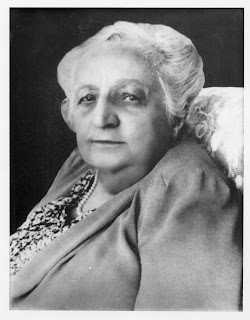 |
| Photo by James Kavallines, taken for the New York Herald Tribune. |
In 1961, two residents from the New Hyde Park/Great Neck area, Hazel Kaufman and Fran Wunderlich, became increasingly alarmed by the ominous signs of war between the U.S. and the U.S.S.R. The rhetoric between Kennedy and Khrushchev was constantly escalating. Media reports were dire and threatening. Children in Great Neck, including those of Hazel and Fran, were being told to hide under their desks in case of a Soviet missile attack. Nuclear war seemed inevitable, even imminent. Fran and Hazel decided to take matters into their own hands. They wrote a petition, to be signed mostly by children, simply pleading for peace, not war, between the two superpowers. It called on Kennedy and Khrushchev to stress reason and discussion over rhetoric and confrontation. They called their movement The Children’s Plea for Peace. Children took copies of the petitions to school and asked other students to sign them. This was done in cooperation with the Great Neck Public Schools’ administration. Other children and parents from other communities heard about the petitions and asked for copies. Soon, people were circulating the petition all over the U.S., and in England, Japan, and India. Word of the Plea for Peace began to spread. Extensive coverage in the media followed. Participants in the Plea for Peace were interviewed by the New York Times, the New York Herald Tribune, the New York Post, and many local newspapers.
 |
Participants in the Children’s Plea for Peace included Elissa Kaufman (14), Michael Wunderlich (10), and Richard Lazes (13), who traveled with fellow students from New Hyde Park to the United Nations to rally. Their aim was to present a scroll comprising 10,000 petition signatures to the international organization. Their pleas were recognized – undersecretary Ralph Bunche accepted their petition scroll on behalf of the United Nations, and media coverage of the Plea for Peace took off. Photo by James Kavallines, taken for the New York Herald Tribune.
|
When 10,000 people had signed, Great Neck’s Plea for Peacers attached all of their petitions together, end to end, to form a huge scroll. A large group of children traveled to the United Nations in Manhattan with placards in hand, asking that they be allowed to officially present their petitions to the international body. Dr. Ralph Bunche, noted diplomat, academic, and U.N. administrator received three of the Plea for Peace children, and accepted their petition scroll, which remains in the U.N. archival collection to this day.
Signatures for the petition arrived from around the world, including over 700 students from the Mar Basil High School, Kothamangalam, Kerala State, South India (left), and the Kamakura Prefecture, Japan, near Tokyo (right).
Other than advocating for peace and respectful, constructive communication between the U.S. and the U.S.S.R., participants in The Children’s Plea for Peace learned a valuable lesson in civics. They discovered that their efforts and concerns could be recognized, and that their activities could have real effects on the social discourse of the day. Many of the Plea for Peace children went on to become advocates, activists and civic leaders. The Children’s Plea for Peace had taught them how to act on the issues that mattered to them, and speak up for what they believed in.
Press coverage in local and New York City papers took off as the Plea for Peace grew, culminating with the response to the presentation by children of over 10,000 signatures at the U.N.
Images and information for this blog post were provided to the Great Neck Library by Hazel Kaufman. This blog post is a companion to a local history display at the Main Building of the Great Neck Library, on view until September, 2011.




































